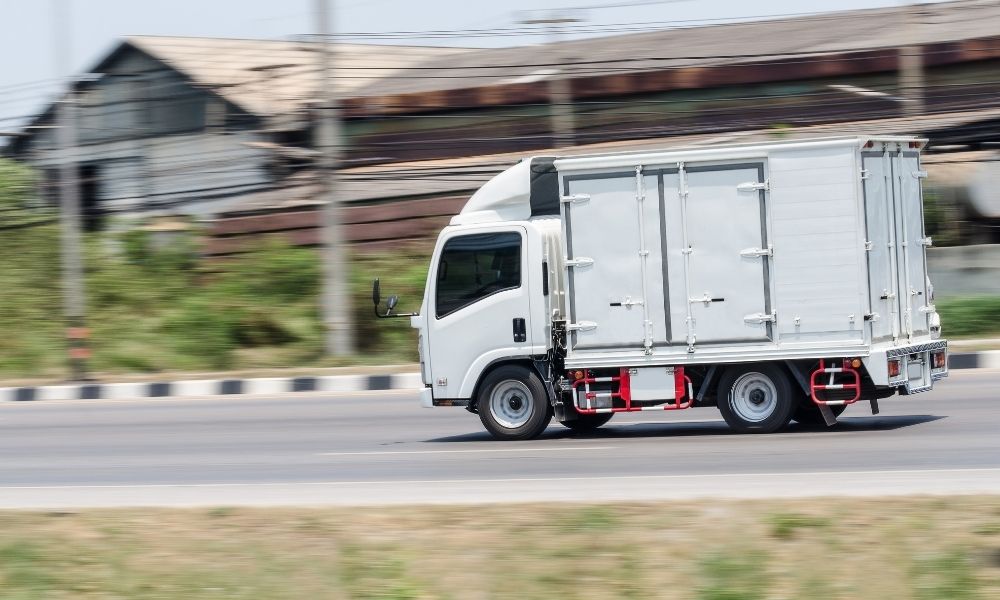
Buying A Refrigerated Truck
Joe Dickman | March 1st, 2024
In the realm of perishable goods transport, the right refrigerated truck is pivotal. Choosing the correct vehicle ensures products arrive in optimal condition. If you need help picking the right truck for your needs, we’ve provided the handy list below to help you shop smart:
Know Your Needs:
Consider the truck size, necessary temperature controls, and the types of goods you’re transporting. Whether dairy products, which need colder temperatures, or fresh produce, which have milder requirements, tailor your choice accordingly.
Research Brands and Models:
Numerous truck manufacturers exist, each offering unique features. Conduct thorough research, read reviews, and seek recommendations. Remember, this truck is a significant business investment.
Prioritize the Refrigeration Unit:
A truck’s visual appeal is secondary to its refrigeration unit’s efficiency. Ensure it’s high quality, reliable, and maintains consistent temperatures, especially in extreme conditions.
Consider Custom Solutions:
For businesses with specific needs, customization is vital. Providers like Emerald Transportation Solutions offer tailored solutions, aligning your truck to your precise requirements.
Factor in Fuel Efficiency:
With escalating fuel prices, an efficient model offers long-term savings. Sometimes, an initially higher investment reaps more significant future savings.
Budget Appropriately:
Having a clear budget aids in decision-making. However, flexibility can be advantageous, especially if a slightly higher spend ensures greater reliability.
Emerald Transportation Solutions – Excellence Awaits
In refrigerated transport, excellence is non-negotiable. At Emerald, we offer solutions, not just trucks. Lets explore some of our favorite options:
Vans
An insulated, refrigerated cargo van might be the perfect solution to deliver your refrigerated goods. Explore many sizes and capabilities to select the one that fits your needs. Our selection of vans includes various brands such as the Chevrolet, Nissan, and Ford transit refrigerated van for sale.
VanMax™
It’s all in the name. We utilize a van chassis to provide maximum cargo area. See why this unique design has become the vehicle of choice for so many of our customers.
Trucks
When a Van or VanMax just won’t get the job done, let Emerald build the perfect truck for your needs. For payloads from 5,000 to 15,000 lbs and insulated bodies from 12′ to 28′ come see what we can do.
With our expertise and commitment, let us help you find the ideal transport solution. Contact us today and elevate your transport standards with Emerald.
Related Articles
Contact Us
Feel Free To Contact Us If You Have Any Questions
What does under DOT mean?
Questions regarding DOT requirements come up often. 10,000 lbs GVW (gross vehicle weight) and over are commercial vehicles that fall under the Department of Transportation regulatory requirements.
What is the difference between GVW and payload?
GVW or Gross Vehicle Weight is the entire weight of the vehicle including the payload. The payload weight represents the amount of cargo you are hauling.
What is a self-powered unit and a vehicle-powered unit?
A self-powered unit has its own fuel source and will run independent of the truck. This is the heaviest and most expensive option. While vehicle-powered units run off the engine via a compressor mounted on the engine. These are less expensive and lighter in weight but you must run the truck or plug the electric standby into shore power.
What does K-factor mean and why is that important?
K-factor is a term that stands for the overall insulating value of the container (truck body). Quite simply the lower the K-factor the better the truck body will be able to maintain a given temperature and require less energy to do so.
How much lighter is a Poly Van vs a US spec body?
Poly Van bodies are very light. On average we estimate we are 75-150 lbs per foot lighter than a traditional sheet and post foamed in place body. These weight savings translates to less fuel burn and less CO2 emissions, along with added payload, the most important benefit.







